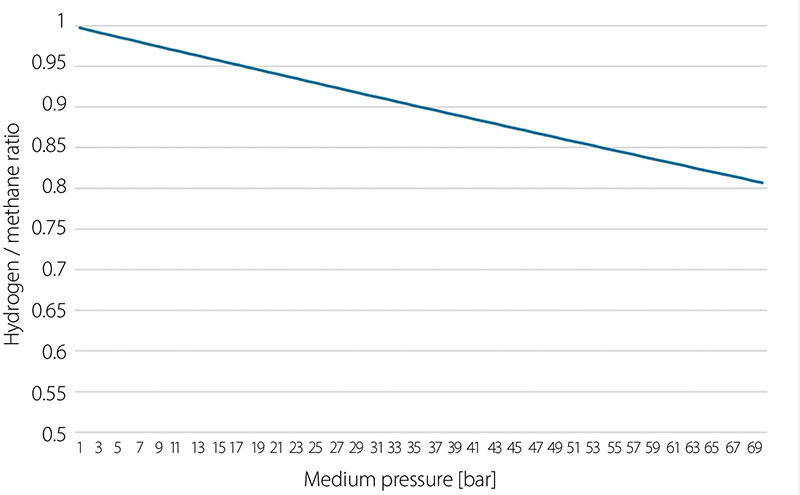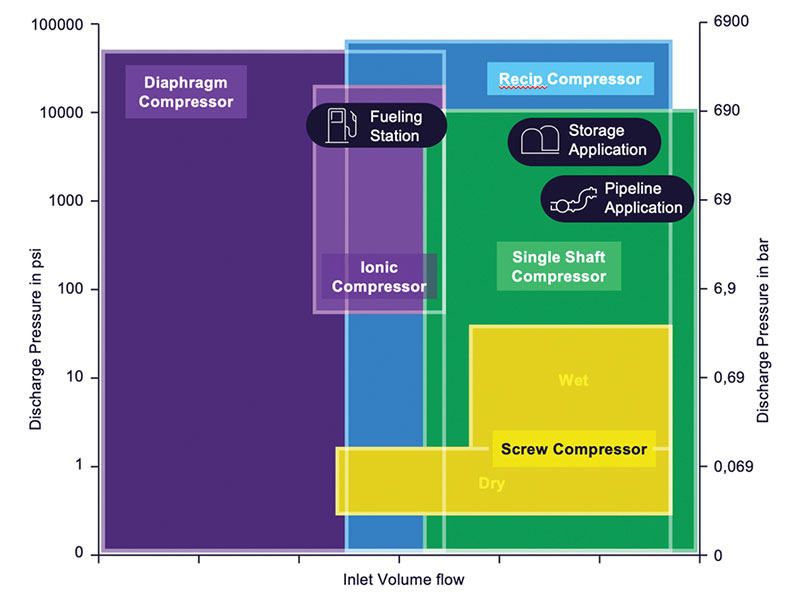May 2022, Vol. 249, No. 5
Features
Preparing America’s Pipeline Infrastructure for the Hydrogen Economy
By Arja Talakar, Senior Vice President, Siemens Energy Industrial Applications Products Business
Hydrogen is poised to play an essential role in the global energy transition, and it holds enormous potential in helping sectors—from mobility to power generation—achieve deep decarbonization. However, there are still many hurdles to overcome to build a sustainable and prudent hydrogen economy in North America.
First and foremost, the production capacity of “blue” and “green” hydrogen will need to be expanded beyond what it is currently. Although progress has been made in recent years and will undoubtedly continue as the build-out of renewable energy capacity accelerates, upward of 95% of all hydrogen produced today is “grey,” meaning it is not emissions-free.
A second aspect, which is often less discussed, relates to how large volumes of hydrogen can be safely and economically transported across long distances to end-users. Given the cost and regulatory complexities associated with building new pipelines, many government and private industry stakeholders have begun asking whether existing natural gas infrastructure could be used to transport hydrogen.
By discussing the impact blending hydrogen with natural gas has on pipeline operation and discussing what, if any, modifications are required for crucial assets, such as compressors and gas turbines, this article presents answers to these questions.
Hydrogen vs. Natural Gas Compression
The transport energy density of hydrogen is only slightly lower than that of natural gas. As a result, blending the two to create an admixture does not have a material impact on the total energy transport capacity of the pipeline.
However, the much lower molecular weight of hydrogen relative to natural gas does affect the type and design of the machine used for compression.
Today, reciprocating and centrifugal compressors (i.e., turbo-compressors) are the two most common machines used for compressing hydrogen. Both compressor types can handle a broad range of application scenarios, with the choice of technology largely coming down to economic tradeoffs and the facility’s specific requirements, including required flow rates, pressure ratios, footprint limitations, use of dry or wet sealing, etc.
Reciprocating compressors are highly efficient at compressing high hydrogen admixtures, and they have been used successfully for decades in downstream applications.
For most pipeline compression stations that use reciprocating compressors, adding hydrogen to the gas admixture will not necessitate the installation of an entirely new machine; although, it may require modifications to key components, such as pistons, packing rings and rider bands.
Additional units or cylinders may also need to be installed in parallel arrangement to achieve the desired pressure ratio and flow rate. Combined with increased drive power, it is possible to achieve economical pipeline transport capacities of up to 750,000 Nm³/h with reciprocating compressors.
Additional factors often need to be considered when turbo-compressors are used in hydrogen service. While many variables come into play, the level of hydrogen content in the pipeline will determine whether the compressor can be modified or if it must be replaced entirely.
As a rule of thumb, no significant changes to the compressor hardware are needed in applications in which the gas admixture is less than 10% hydrogen by volume. The compressor housing can be kept up to approximately 40% hydrogen, but adjustments will likely need to be made to impellers, feedback stages and gears. Beyond 40% hydrogen, a new turbo-compressor unit is required.2
Gas Turbines
Many natural gas compression stations across the U.S. use gas turbines to drive compressors or generators for on-site power production. Because fuel for the gas turbines is typically drawn directly from the pipeline, end-users must ensure that units can safely and reliably burn admixtures with hydrogen.
Under adiabatic and stoichiometric conditions, the flame temperature of hydrogen is more than 572 degrees F (300 degree C) higher than it is for natural gas. In addition, the laminar flow speed is significantly higher for certain flame temperatures. These characteristics present unique challenges when it comes to controlling the flame to maintain the integrity of the gas turbine’s combustion system and achieve an acceptable level of emissions.
In recent years, gas turbine manufacturers have made significant progress in addressing these issues. Siemens Energy, for example, currently has more than 55 hydrogen gas turbines installed around the world. Together, these units have accumulated 2.5-plus million hours of operating experience.
Today, units of varying sizes and combustion system types (e.g., unabated diffusion flame, wet low emissions [WLE], dry low emissions [DLE]) can reliably handle fuel mixtures with high hydrogen content.
At Siemens Energy, many of our gas turbine models can operate 100% on hydrogen fuel. We have an ambitious goal of making all our turbines 100% compatible with hydrogen by 2030 and continue to make advancements in several key design areas, including hot gas path components.
As is the case with compressors, the decision to modify an existing gas turbine or replace it entirely will depend on several factors, including the hydrogen content in the admixture, the age of the unit, required drive power, objectives of the operator, etc.
One particular concern with older gas turbines that do not use state-of-the-art construction materials or protective coatings for impellers is hydrogen-induced cracking (HIC) or hydrogen embrittlement. This is also a notable concern for steel pipelines.
HIC occurs when atomic hydrogen diffuses into metal, causing deterioration of structural integrity. Depending on the type of alloy and the operating conditions, this can lead to the creation of crack-like defects, reducing the service life of the line or component.
Becoming Reality
Contrary to popular belief, pure hydrogen pipeline systems totaling thousands of miles in length have been in operation across the globe for decades. The technologies needed to operate these networks safely and economically are proven and can be applied to existing natural gas infrastructure if and when they are required.
Furthermore, studies have shown that the conversion of pipelines from natural gas to hydrogen is not only possible but can be done at 10% to 15% of the cost to build new pipelines.[3]
In the U.S., leveraging existing transport infrastructure can play a crucial role in rapidly scaling the hydrogen economy, ensuring the security of supply as we move increasingly toward renewables. Doing so also opens new opportunities for sector coupling and transporting clean energy from regions that are rich in renewable sources to ones that are not.
However, making the hydrogen economy a reality is not something any single organization or industry can achieve on its own. It will require strong partnerships and collaboration between utilities, operators and technology providers. The government also has a vital role in establishing a regulatory framework that facilitates planning security and investment decisions in large-scale projects.
It is only by working together that the full potential of hydrogen in the energy transition will be realized.
References
- Adam, P., F. Heunemann, C. von dem Bussche, T. Thiemann, S. Engelshove. Hydrogen infrastructure – the pillar of energy transition. The practical conversion of long-distance gas networks to hydrogen operation. Siemens Energy, Gascade Gastransport, Nowega GmbH
- Adam, P., R. Bode, Groissbeck, M. “Readying Pipelines for 100% Hydrogen.” Turbomachinery Magazine. December 2020.
- Adam, P. “Opportunities and Challenges in Converting Existing Natural Gas Infrastructure for Hydrogen Operation.” Abu Dhabi International Petroleum Exhibition & Conference, Abu Dhabi, UAE, November 2021. doi: https://doi.org/10.2118/208033-MS.







Comments